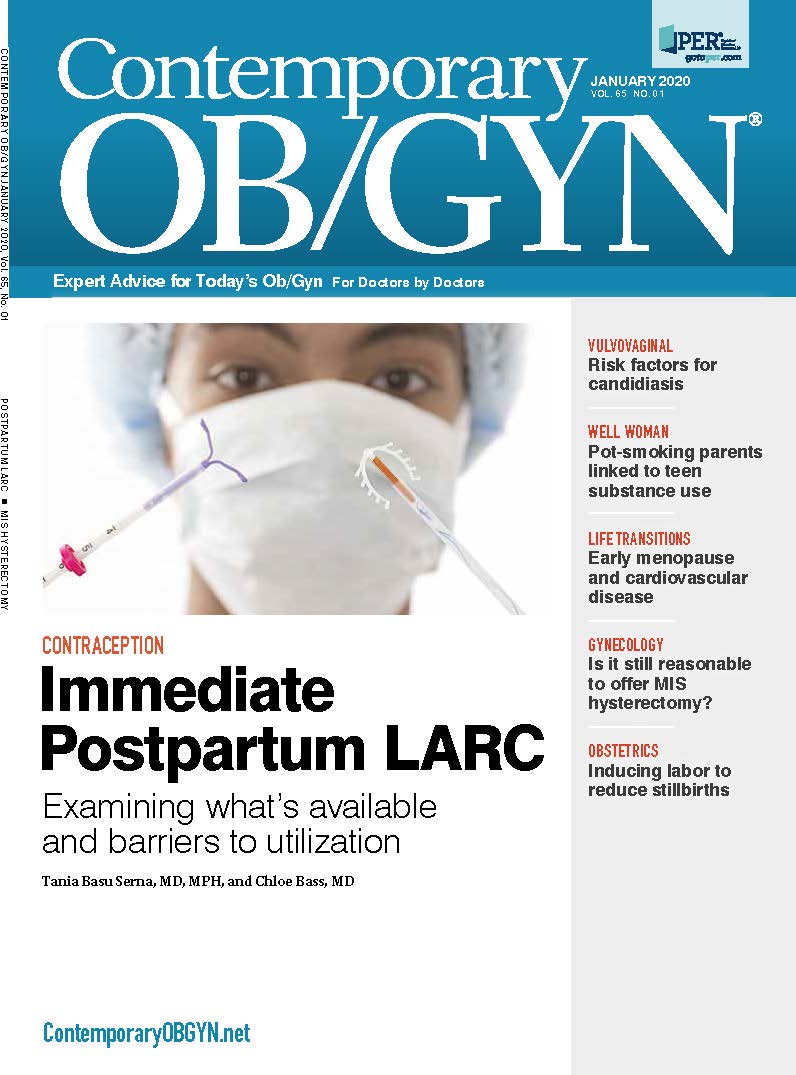Premature menopause and cardiovascular disease
Women who reach menopause before age 40 may have an increased risk for subsequent cardiovascular disease, according to research from JAMA.
©Adiano - stock.adobe.com

Both natural and surgical premature menopause before age 40 are associated with a small but statistically significant increased risk for subsequent cardiovascular disease (CVD) compared to that in postmenopausal women without premature menopause, according to a cohort study in JAMA.
The composite outcome included coronary artery disease, heart failure, aortic stenosis, mitral regurgitation, atrial fibrillation, ischemic stroke, peripheral artery disease and venous thromboembolism.
The authors noted that although recent guidelines embrace using history of menopause before age 40 to refine atherosclerotic cardiovascular disease (ASCVD) risk assessments in middle-aged women, “robust data on cardiovascular disease risk in this population is lacking.”
Methods
The cohort of 144,260 eligible women was from the large-scale, long-term observational UK Biobank study, comprising adult residents of the United Kingdom recruited between 2006 and 2010. All included women were 40 to 69 years old (mean age 59.9) and postmenopausal at study enrollment, with median follow-up of 7 years through August 2016. Natural premature menopause was defined as menopause before age 40 without oophorectomy, while surgical premature menopause was bilateral oophorectomy before age 40.
Findings
Overall, 3.4% (n = 4,903) of women had natural premature menopause and 0.4% (n = 644) had surgical premature menopause. The primary outcome of incidence of composite CVD was 3.9% (n = 5,415) in women with no premature menopause (5.7/1,000 woman-years) and 6.0% (n = 292) in women with natural premature menopause (8.78/1,000 woman-years), representing a difference vs. no premature menopause of +3.08/1,000 woman-years (95% confidence interval [CI]: 2.06 to 4.10; P < 0.001).
Among the 7.6% of women (n = 49) with surgical premature menopause (11.27/1,000 woman-years), the difference vs. no premature menopause was +5.57/1,000 woman-years (95% CI: 2.41 to 8.73; P < 0.001). Overall, natural and surgical premature menopause had hazard ratios of 1.36 (95% CI: 1.19 to 1.56; P < 0.001) and 1.87 (95% CI: 1.36 to 2.58; P < 0.001), respectively, after accounting for conventional CVD risk factors and menopausal hormone therapy.
“These results may have implications for understanding and mitigating the long-term risk for cardiovascular disease associated with premature menopause,” wrote the authors from Massachusetts, Connecticut and Florida. For instance, history of premature menopause allows for primordial prevention, which is a targeted nonpharmacologic strategy to reduce the risk of developing cardiovascular risk factors.
The Framingham Heart Study found that a higher premenopausal Framingham risk factor was linked to earlier age at menopause. The current study, though, concluded that premature menopause may not be limited to comorbid with conventional CVD risk factors, but may separately increase odds of developing these risk factors. In addition, the study found that the CVD risk connected to premature menopause extended beyond ASCVD.
Conclusions
“Postmenopausal state is associated with increase in cytokines and oxidative stress, which may contribute to osteogenesis of valvular interstitial cells,” wrote the authors, noting that it is unknown if this mechanism links premature menopause to aortic stenosis.
Lastly, the form of menopause may be connected to differential cardiovascular risk. Although significant differences in risk between natural and surgical premature menopause were not evident in fully adjusted models, risk differences may arise from differential development of conventional cardiovascular risk facts. There is also the possibility the study had reduced statistical power.
The authors said further research is needed to understand the mechanisms causing the associations between premature menopause and CVD.

Low creatinine-to-cystatin C ratio linked to postmenopausal muscle loss
March 20th 2025A new study finds that postmenopausal women with a reduced creatinine-to-cystatin C ratio experience decreased muscle volume and slower walking speed, highlighting its role as a potential biomarker for muscle health.
Read More
